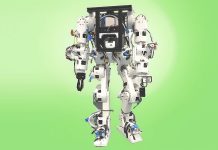
Imagine tiny artificial hairs that can move on their own, like the cilia in your body.
These are magnetic cilia, and they’ve been around for a while, used in things like soft robots and mixing liquids.
But now, researchers have figured out how to give these magnetic hairs new abilities – they can be reprogrammed to move in different ways!
Here’s how it works: Most magnetic cilia are made with either ‘soft’ or ‘hard’ magnets.
Soft magnets only become magnetic when near another magnetic field, while hard magnets can make their own magnetic field.
Hard magnets have an advantage because they can be programmed – kind of like giving them instructions on how to move.
In this new study, researchers created magnetic cilia using hard magnets made of neodymium – a powerful type of magnet.
They mixed these magnets into a special polymer, which is a type of material, and shaped them into tiny hairs.
But here’s the really cool part: these magnetic hairs can now be reprogrammed to move in different ways! It’s like teaching an old dog new tricks.
The researchers found a way to change the direction of the magnets in the hairs at room temperature, which changes how the hairs move.
To do this, they first freeze the hairs in the direction they want. Then, they use a special magnetic field to shake things up and change the direction of the magnets. It’s kind of like hitting the reset button on a computer.
Once the magnets are reset, the researchers can apply a strong magnetic field to give them new instructions. This changes how the hairs move, so they can do different things like snap or rotate.
And it’s not just trial and error – the researchers also created a computer model to predict how the hairs will move based on their magnet orientation. This means they can design magnetic cilia to do exactly what they want them to do.
So, what’s the big deal?
Well, imagine using these reprogrammable magnetic cilia in medicine. They could be used to deliver drugs to specific parts of your body or even help doctors see inside you better with high-resolution imaging.
But it’s not just medicine that could benefit. These magnetic hairs could also be used in things like robots or even in remote environments where it’s hard for humans to go.
Overall, this breakthrough in magnetic cilia is opening up a whole new world of possibilities. Who knows what other amazing things these tiny hairs could do in the future?
Source: North Carolina State University.



